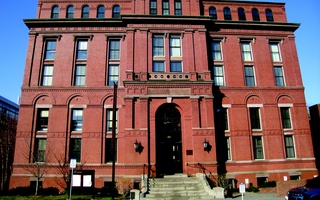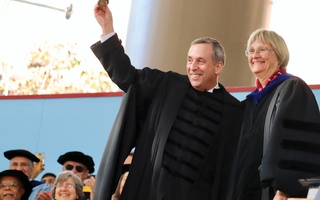{shortcode-925995ae39a370a47638e0315b45d37302a67fed}
The Faculty Executive Committee of the Peabody Museum of Archaeology and Ethnology will develop initiatives to increase public access to a set of historic photographs of enslaved people at the center of a lawsuit against Harvard, according to an email museum director Jane Pickering sent to the Committee.
Part of a set of images at issue in the suit, referred to as the “Zealy daguerreotypes,” picture two enslaved people identified as Renty and Delia. Harvard biologist Louis Agassiz commissioned them in 1850 as part of an attempt to prove his theory of biological white superiority.
Tamara K. Lanier — a Connecticut woman who says she is descended from Renty and Delia — sued the University and the Peabody Museum in March for possessing and profiting from the daguerreotypes. Lanier requests in the suit that the University turn the daguerreotypes over to her, give up all profits it has made off the photos, and pay punitive damages to her.
In her email to the faculty committee, Pickering wrote that the University would address the merits of Lanier’s case in future court filings, but added that the museum should learn from the lawsuit to improve its methods for responding to claims like Lanier’s.
“Ms. Lanier’s complaint raises important questions regarding, among other things, what it means for the Peabody to serve as an ethical steward of highly sensitive objects like the Zealy daguerreotypes,” Pickering wrote.
Pickering wrote that she hopes to work with the faculty committee to develop ways to make the daguerreotypes accessible to more of the public and “to tell the stories of the enslaved people that they depict.”
“I believe we can, and should, do more,” Pickering wrote. “The Peabody might, for instance, consider a long-term loan of the daguerreotypes to an institution with a collection that has a greater focus on African American history and culture.”
She also proposed that the museum organize a traveling exhibition with reproductions of the daguerreotypes.
In her lawsuit, Lanier alleged that the daguerreotypes amounted to “spoils of theft,” since the subjects were “stripped naked and forced to pose for the daguerreotypes without consent, dignity, or compensation.” She also alleged that the University has been using the images for financial profit, citing the use of the image of Renty on the cover of an anthropology book as an example.
In an April interview with The Crimson, University President Lawrence S. Bacow denied that the University only seeks to profit from the images, which are in the public domain. He also said that “the law is on our side” in the lawsuit.
Pickering wrote in her email to the faculty committee that Lanier and her daughter met with an archivist when they visited the daguerreotypes of Renty and Delia in 2010, and that museum staff asked Lanier to share any research she had conducted about the daguerreotypes and her relation to Renty and Delia.
“In sum, my understanding is that our staff treated Ms. Lanier with respect and repeatedly informed her that they were open to reviewing additional information about her story,” Pickering wrote.
Lanier could not immediately be reached for comment. A spokesperson for Lanier’s lawyer did not respond to a request for comment.
— Staff writer Oliver L. Riskin-Kutz can be reached at oliver.riskin-kutz@thecrimson.com. Follow him on Twitter at @OLRiskinKutz















